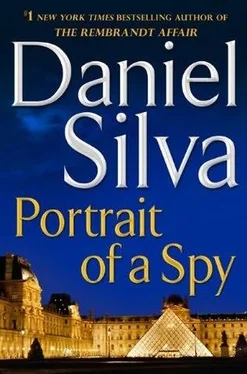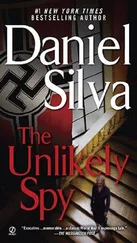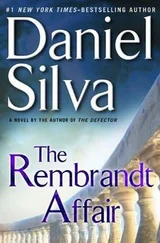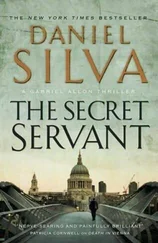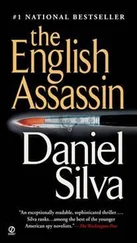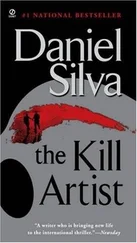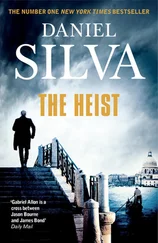It seemed that at some point the previous August, an unidentified Norfolk nobleman of great title but shrinking resources reluctantly decided to part with a portion of his art collection. This nobleman made contact with a London art dealer, also unidentified, and asked whether he might be willing to accept the assignment. This London art dealer was busy at the time—truth be told, he was sunning himself in the Costa del Sol—and it was late September before he was able to make his way to the nobleman’s estate. The dealer found the collection lackluster, to put it mildly, though he did agree to take several paintings off the nobleman’s hands, including a very dirty work attributed to some hack in the workshop of Palma Vecchio. The amount of money that changed hands was never disclosed. It was said to be quite small.
For reasons not made clear, the dealer allowed the paintings to languish in his storage rooms before commissioning a hasty cleaning of the aforementioned Palma Vecchio. The identity of the restorer was never revealed, though all agreed he gave a rather good account of himself in a remarkably short period of time. Indeed, the painting was in such fine shape that it managed to catch the wandering eye of one Oliver Dimbleby, the noted Old Master dealer from Bury Street. Oliver acquired it in a trade—the other paintings involved were never disclosed—and promptly hung it in his gallery, viewable by appointment only.
It would not remain there long, however. In fact, just forty-eight hours later, it was purchased by something called Onyx Innovative Capital, a limited liability investment firm registered in the Swiss city of Lucerne. Oliver didn’t deal directly with OIC, but rather with an agreeable bloke named Samir Abbas of the TransArabian Bank. After thrashing out the final details over tea at the Dorchester Hotel, Abbas presented Oliver with a check for twenty-two thousand pounds. Oliver quickly deposited the money into his account at Lloyds Bank, thus consecrating the sale, and began the messy process of securing the necessary export license.
It was at this point that the affair took a disastrous turn, at least from Oliver’s point of view. Because on a dismal afternoon in late January there came to Oliver’s gallery a rumpled figure dressed in many layers of clothing, who, with a single offhand question, sent the apples rolling across the proverbial floor. Oliver would never reveal the identity of the man, except to say he was learned in the field of Italian Renaissance art, particularly the Venetian School. As for the question posed by this man, Oliver was willing to repeat it verbatim. In fact, for the price of a good glass of Sancerre, he would act out the entire scene. For Oliver loved nothing more than to tell stories on himself, especially when they were less than flattering, which was almost always the case.
“I say, Oliver, old chap, but is that Titian spoken for?”
“Not a Titian, my good man.”
“Sure about that?”
“Positive as I can be.”
“Who is it, then?”
“Palma.”
“Really? Rather good for a Palma. Workshop or the man himself?”
“Workshop, love. Workshop.”
It was then the rumpled figure leaned precariously forward to have a closer look—a lean that Oliver re-created nightly at Green’s to uproarious laughter.
“Sold, is it?” asked the rumpled figure, tugging at his earlobe.
“Just last week,” said Oliver.
“As a Palma?”
“Workshop, love. Workshop.”
“How much?”
“My good man!”
“If I were you, I’d find some way to wriggle out of it.”
“Whatever for?”
“Look at the draftsmanship. Look at the brushwork. You just let a Titian slip through your fingers. Shame on you, Oliver. Hang your head. Confess your sins.”
Oliver did neither, but within minutes he was on the phone to an old chum at the British Museum who had forgotten more about Titian than most art historians would ever know. The chum hurried over to St. James’s in a deluge and stood before the canvas looking like the only survivor of a shipwreck.
“Oliver! How could you?”
“Is it that obvious?”
“I’d stake my reputation on it.”
“At least you have one. Mine will be in the loo if this gets out.”
“You do have one option.”
“What’s that?”
“Call Mr. Abbas. Tell him the check bounced.”
And don’t think the idea didn’t cross Oliver’s devious little mind. In fact, he spent the better part of the next forty-eight hours trying to find some legally and morally acceptable loophole that he might use to extricate himself from the deal. Finding none—at least not one that would allow him to sleep at night—he called Mr. Abbas to inform him that Onyx Innovative Capital was actually the proud owner of a newly discovered Titian. Oliver offered to take the painting to market, hoping to at least salvage a healthy commission out of the debacle, but Abbas called back the very next day to say OIC was going in a different direction. “Tried to let me down easy,” Oliver said wistfully. “Pleasure doing business with you, Mr. Dimbleby. Lunch next time you’re in Zurich, Mr. Dimbleby. And by the way, Mr. Dimbleby, the lads from Christie’s will be stopping by in an hour.”
They appeared with the suddenness of professional kidnappers and carried the painting over to King Street, where it was examined by a parade of Titian experts from around the globe. Each rendered the same verdict, and, miraculously, not one violated the draconian confidentiality agreement that Christie’s had made them sign for their fee. Even the normally loquacious Oliver managed to keep quiet until after Christie’s unveiled its prize. But then Oliver had reason to hold his tongue. Oliver was the goat who let a Titian slip through his hooves.
But even Oliver seemed to find a bit of pleasure in the frenzy that followed the announcement. And why ever not? It really had been a dreadful winter till that point, with the government austerity and the blizzards and the bombings. Oliver was only happy he was able to lighten the mood, even if it meant playing the fool for drinks at Green’s. Besides, he knew the role well. He had played it many times before, to great acclaim.
On the night of the auction, he gave what would be his final performance to a standing-room-only crowd. At its conclusion, he made three curtain calls, then joined the throng heading over to Christie’s for the big show. Management had been kind enough to reserve a second-row seat for him, directly in front of the auctioneer’s rostrum. Seated to his left was his friend and competitor, Roddy Hutchinson, and to Roddy’s left was Julian Isherwood. The seat to Oliver’s right was unoccupied. A moment later, it was filled by none other than Nicholas Lovegrove, art adviser to the vastly rich. Lovegrove had just flown in from New York. Private, of course. Lovegrove didn’t do commercial anymore.
“Why the long face, Ollie?”
“Thoughts of what might have been.”
“Sorry about the Titian.”
“Win some, lose some. How’s biz, Nicky?”
“Can’t complain.”
“Didn’t realize you dabbled in Old Masters.”
“Actually, they terrify me. Look at this place. It’s like being in a bloody church—all angels and saints and martyrdom and crucifixion.”
“So what brings you to town?”
“A client who wants to venture into new territory.”
“Client have a name?”
“Client wishes to remain anonymous— very anonymous.”
“Know the feeling. Your client planning to venture into new territory by acquiring a Titian?”
“You’ll know soon enough, Ollie.”
“Hope your client has deep pockets.”
“I only do deep pockets.”
“Word on the street is that it’s going to go big.”
Читать дальше
Конец ознакомительного отрывка
Купить книгу
